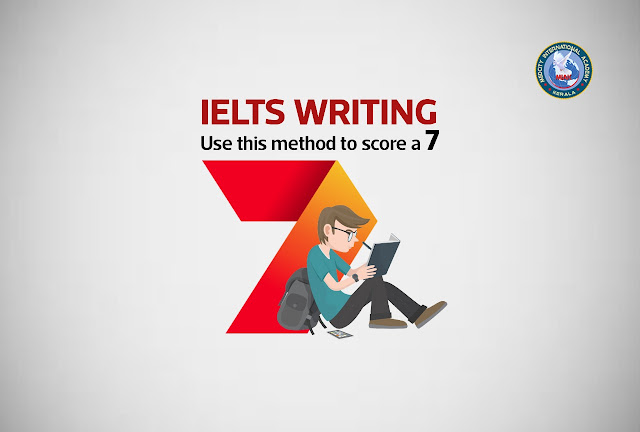- Get link
- X
- Other Apps
- Get link
- X
- Other Apps
Anybody who has taken an IELTS exam knows that scoring a band 7 on writing is no piece of cake. So does this mean no one can score a 7 band or higher?
Let's find out.
Yes, it's no easy task to score a 7.
But we have devised a way, which, when implemented correctly, will prove to improve the odds enormously of a student scoring a 7. We call this " The POWER writing method ".
Let's have a look at what this is.
POWER Writing is a step-by-step procedure that will boost your chance of getting a good score on your writing test. It is the same for task 1 and task 2. As you might have guessed, POWER is an acronym.
- P: Plan your essay. The first step after you are done understanding the question is to lay down the ideas in a clear manner. This can be simply noting down the various Timeframe that you will be using in your report or the ideas that could be used while writing your essays. For example, A graph with over 50 or 60 years of data is quite a lot of information to describe. So the 'P' here will be deciding which Timeframe or year are worth describing and which ones are the least relevant. In task 2 if the essay statement of the question has 2 different views, you will quickly note down 2 or 3 ideas that fit the context.
- O : Organise your ideas. Here what you have to do is put your ideas and thoughts into the correct order that it brings a good flow to your's answers. In task 1, It is about how well you group your data while task 2, is about what ideas come in what place. For instance, if task 1 has a line graph that shows 4 lines in which 2 exhibits a similar trend, then it is best to group them in the same paragraph and also write down the words that come into your mind when you read the question for both the tasks.
- W : Write. This is the part where you execute the steps of "P" and "O". You have to be quick and concise. Make sure you stick to the organized plan and do not improvise on the go. Take care of leaving one line blank when you finish a paragraph so that the examiner has no trouble differentiating your paragraphs.
- E : Evaluate your work. This is the part where you proofread your answers for any sort of spelling, grammatical or structural mistakes. Make sure you also check for the planned structure. In task 1, make sure you have described all the units correctly as this is one of the most common mistakes that students make or even simply, a better vocabulary that you think might be more apt in the place of an existing word.
- R : Review your mistakes. This is the part where you pick up the eraser and start making amends that you have found while evaluating the answers. Here, be careful as to erase while maintaining the neatness of the paper. Make sure whatever you have replaced after erasing is clear and not smudgy.
Hope this helps!
- Get link
- X
- Other Apps

Comments
Post a Comment